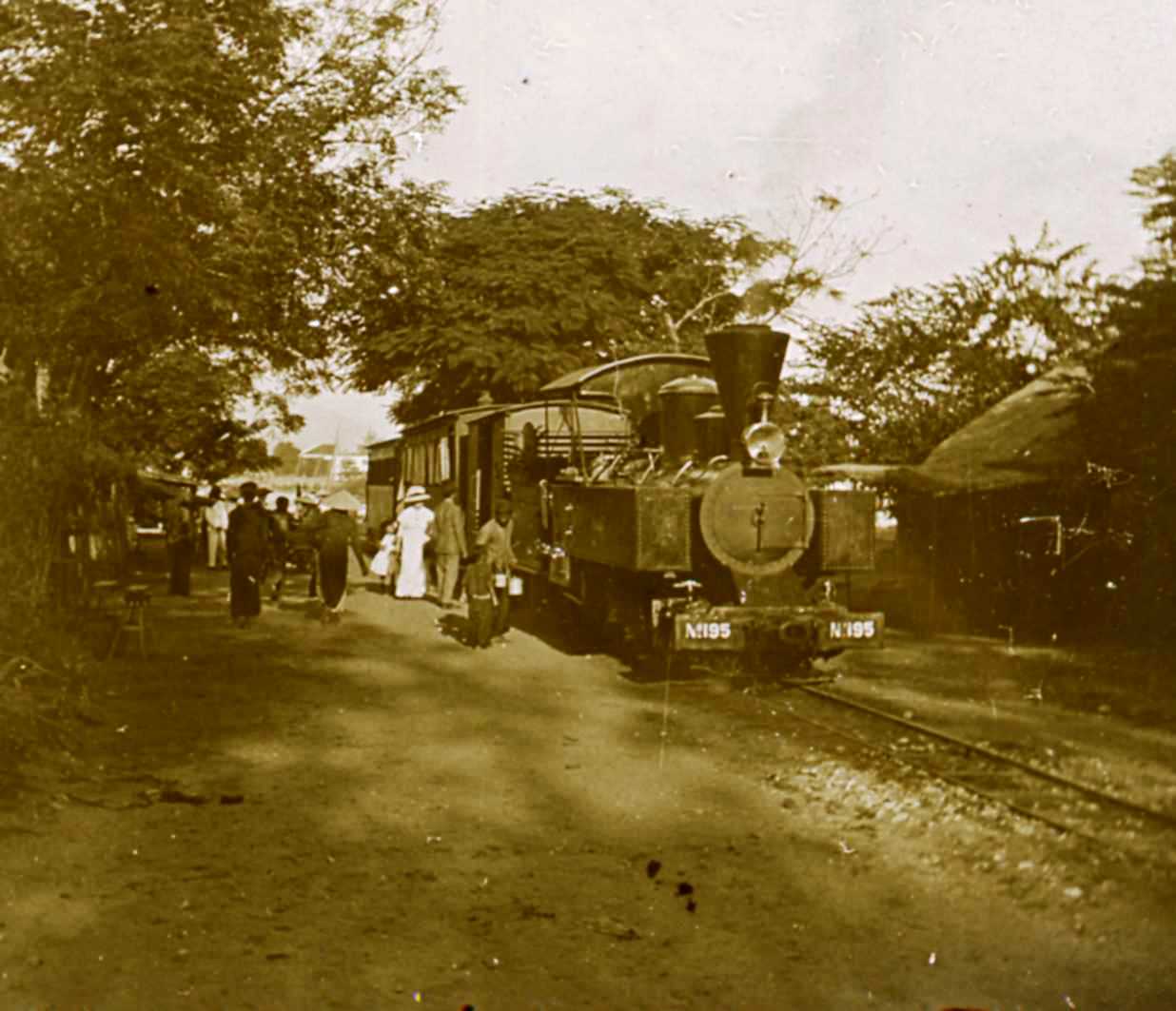
Annam, Tourane, 1906 – Le train en gare (Fonds Sallet)
One hundred years ago, visitors to Tourane (Đa Nẵng) could alight from their train right outside the Hàn Market and, after crossing the Hàn river by ferry, take a steam train all the way to Hội An.
When the French secured control over Tourane in 1888, Faifo was still an important trans-shipment point for trading goods sourced from the interior, but the steady silting of the Cổ Cò River during the 19th century had made it increasingly difficult to transport these goods by boat to Tourane for export.
The idea of building a steam tramway from Tourane to Faifo to replace the Cổ Cò River was first proposed in the late 1890s by Faifo-based tea merchant Dérobert. His plan received the full backing of the Tourane Municipal Trade Office, but was subsequently rejected by the Annam Protectorate authorities because it envisaged a line running due south from the Hàn Market along the west bank of the Cổ Cò River, a path already reserved for the future North-South railway line.
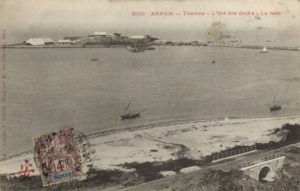
Annam – Tourane – L’Îlot des docks – La rade
Then in 1901, the idea of building a steam tramway between Tourane and Faifo was revived by Ulysse Pila and his business associate J B Malon, whose company the Société des docks et houillères de Tourane (Tourane Docks and Collieries Company, SDHT) had recently taken over the Nông Sơn coal mines and also acquired a concession to create a deepwater port facility at Observatory Point (îlot de l’Observatoire).
In that year, the Observatory Point port project received a boost when the Annam government agreed that it would build the new wharf facilities there. Buoyed by this news, SDHT resolved to build a Tourane-Faifo tramway line at its own expense, along a new path which connected the future deepwater port at Observatory Point with Faifo via the Tiên Sa (Sơn Tra) peninsula.
In 1903, the colonial government authorised SDHT to proceed with construction of the 35.5km line, granting the company a 60-year concession and also donating a large quantity of redundant 0.6m gauge Decauville track, signalling, rolling stock and other equipment from the Phủ Lạng Thương-Lạng Sơn line in Tonkin (Northern Việt Nam), which had been upgraded in 1899-1902 from a tramway into a 1m gauge railway. However, delivery of this equipment was delayed, and when it did arrive it was found to be in very poor condition.
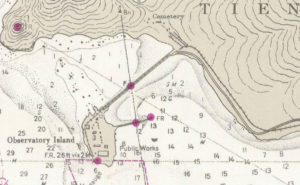
The track plan of the Îlot de l’Observatoire station and depot at Tiên Sa port area
SDHT had proceeded with the tramway project in the anticipation that, by the time it opened, the deepwater port facility at Observatory Point would be operational, but unfortunately this did not happen. Despite the best efforts of the Annam government, the port project never received ministerial approval, and without funding, the Observatory Point port facilities could not be built.
SDHT opened a preliminary 9.5-kilometre stretch of the new tramway line from Observatory Point to Tourane Mỹ Khê on 9 November 1905, but with no way of offloading freight at Observatory Point, traffic on the line only ever comprised a small number of local passengers and their hand baggage.
Unfortunately for SDHT, Nông Sơn’s anthracite coal proved difficult and costly to extract, and the combined impact of trade disruption caused by the Russo-Japanese War (1904-1905) and an increasingly saturated global coal market left it unable to compete effectively – in early 1906, the company was declared bankrupt. For some time after this, the partially-built tramway lay abandoned, and its track and buildings were subsequently devastated by a typhoon. However, in October 1906, after extensive discussions, the tramway line was placed under the control of the state railway company, Chemins de fer de l’Indochine (CFI), which immediately set to work laying the remaining 26km of track, refurbishing the rolling stock and building new stations. CFI also added a short spur from Tourane Mỹ Khê to Tourane Fleuve on the east bank of the Hàn River, where ferries carried passengers and freight across to the main line terminus at Tourane Marché.
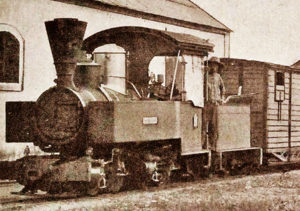
One of the second-hand Decauville 0-4-4-0 “Mallet” patent compound jointed locomotives which once pulled trains to and from Faifo (Hội An)
The “Tramway de l’Îlot de l’Observatoire” opened to the public under state management on 1 October 1907. The line incorporated 10 stations: l’Îlot de l’Observatoire (km 0), Tien Sha (Tiên Sa, km 1), Plantation Guérin (km 5), Tourane Mỹ Khê (km 9.5, with a 0.5km spur to Tourane Fleuve or Tourane Rive-droite), Montagne de Marbre (Marble Mountain, km 17.5), Cẩm Sa (km 26), Có Lưu (km 28), Thanh Hà (km 31) and Faifo (km 35.5). A locomotive maintenance depot was built at Tien Sha. Three round-trip train services were offered daily – two in the morning and one in the afternoon. Most of its business came from passengers headed from Tourane to Faifo, who crossed the river from Tourane Marché to Tourane Rive-droite to make the journey by tram in preference to travelling along bumpy roads in a horse-drawn carriage or pousse-pousse.
Steam trams entered Hội An along modern Nguyễn Tất Thành and Lý Thương Kiệt streets, terminating at a tramway station on the northeast corner of the modern Lý Thương Kiệt/Nguyễn Trường Tộ street junction, just across the road from what was then the spacious compound of the Résidence de France in Quảng Nam. Though very convenient for the handful of French administrators who worked there, this terminus was some distance from the wharf area, the final destination for what little freight was carried by the tramway.
However, the inconvenient location of the Faifo terminus was the least of its problems. Like other Decauville lines in Indochina, the Tramway de l’Îlot de l’Observatoire was beset by technical problems, and its frequent failures soon made the tramway something of a laughing stock.
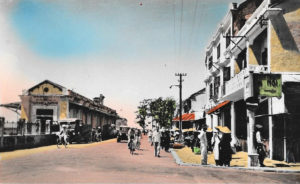
Tourane Marché station on the west bank of the Hàn river
In subsequent years, as road transportation became increasingly popular, usage of the line declined and costs spiralled. When the track bed around Montagne de Marbre (Ngũ Hành Sơn) was destroyed by another typhoon on 27 October 1915, the government of Annam suspended operations. The line was closed permanently on 31 December 1915, after just eight years of service. Soon after this, the track was removed and the rolling stock and other equipment placed on the market. Much of the tramway trackbed was transformed into roads. However, that wasn’t quite the end of the story.
In 1951, the first bridge was constructed across the Hàn River. Designed and built by Établissements Eiffel, the 520m bridge, known initially as the Pont Maréchal-de-Lattre-de-Tassigny, served both road and rail traffic – a military rail spur was installed, running from the main North-South rail line across the bridge to the east bank of the river, where a 3.5km stretch of track was then relaid north along the old tramway trackbed to serve the army base in An Đồn (An Hải).
In 1955-1956, to make way for the expansion of Đà Nẵng Air Base, the main North-South rail line leading south from Đà Nẵng Central Station was rerouted by the South Vietnamese authorities along the new “déviation de Phông Lê,” west of the city centre. However, a short section of the original southbound main line was retained in order to facilitate access to the military rail spur which ran across the river bridge, by this time known as Trình Minh Thế Bridge (Cầu Trình Minh Thế), and north to An Đồn army base and depot.
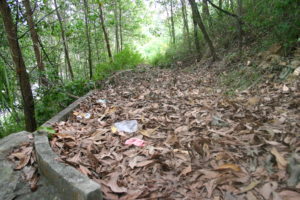
Part of the old tramway trackbed repurposed in the 1950s and 1960s and again in 1975 as a freight spur may still be seen today next to Yết Kiêu street, east of Tiên Sa port
After the arrival of US combat troops in 1965, the amount of American military traffic using the road-rail bridge increased significantly, so in 1966-1967, the US construction consortium RMK-BRJ built an additional road-only bridge known as the Nguyễn Hoàng Bridge, right next to the existing Trịnh Minh Thế Bridge.
The rail line across Trịnh Minh Thế Bridge continued in use until the late 1960s, when it was abandoned, leaving just the access line from Đà Nẵng Central Station to the west bank of the river.
After 1975, the old Eiffel bridge was once more renamed, this time as the Trần Thị Lý Bridge (Cầu Trần Thị Lý) after revolutionary martyr Trần Thị Lý (1933-1992), a native of Điện Bàn District of Quảng Nam province. The new government then reinstated the rail track on the bridge and also extended the line on the Tiên Sa side along the former tramway trackbed, this time as far as the deepwater port area at Observatory Point. This branch line operated for just over a decade, but was eventually abandoned in favour of road haulage. All of the rail track was finally removed in the early 1990s.
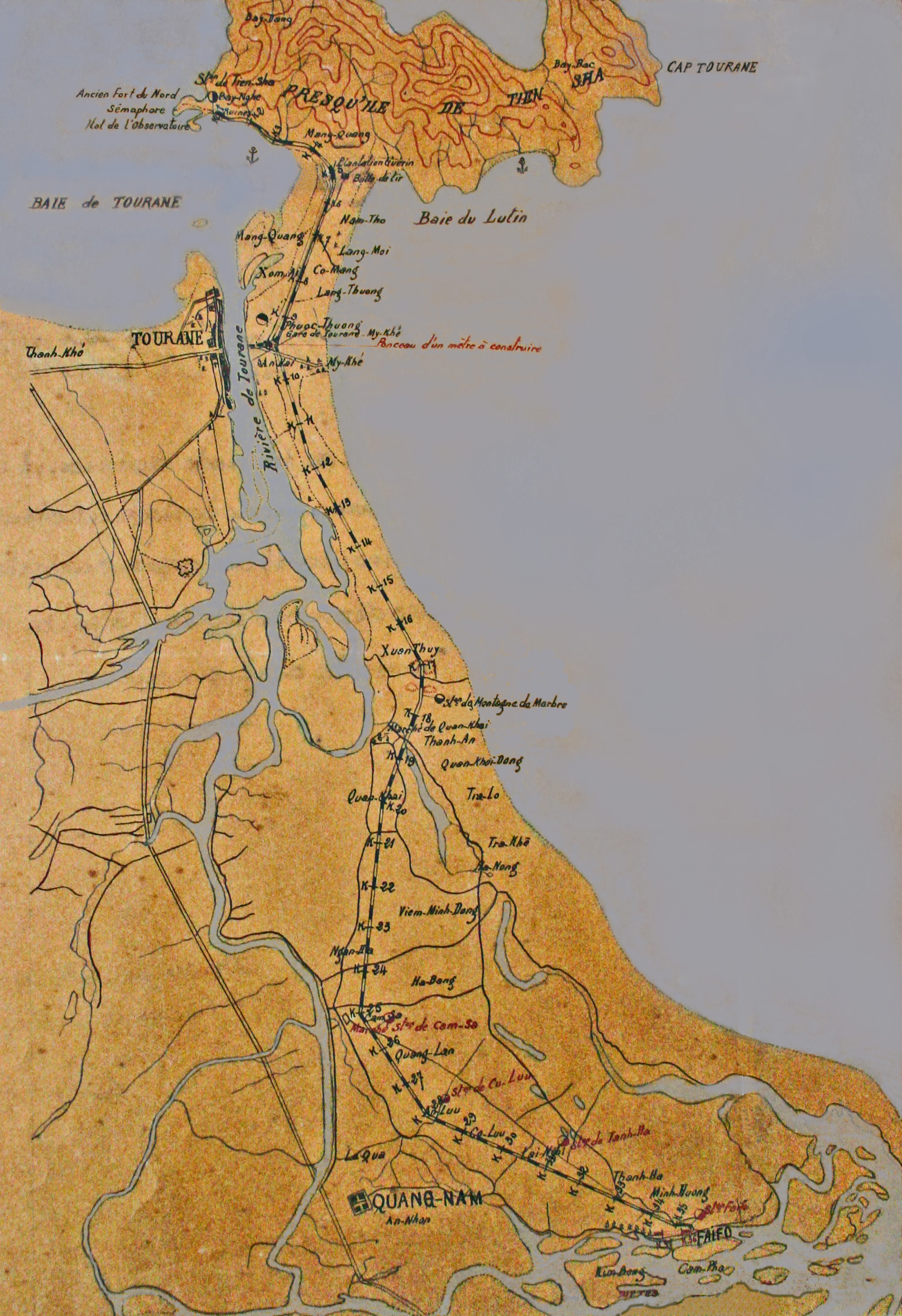
A map of the “Tramway de Îlot de l’Observatoire” while it was still under construction
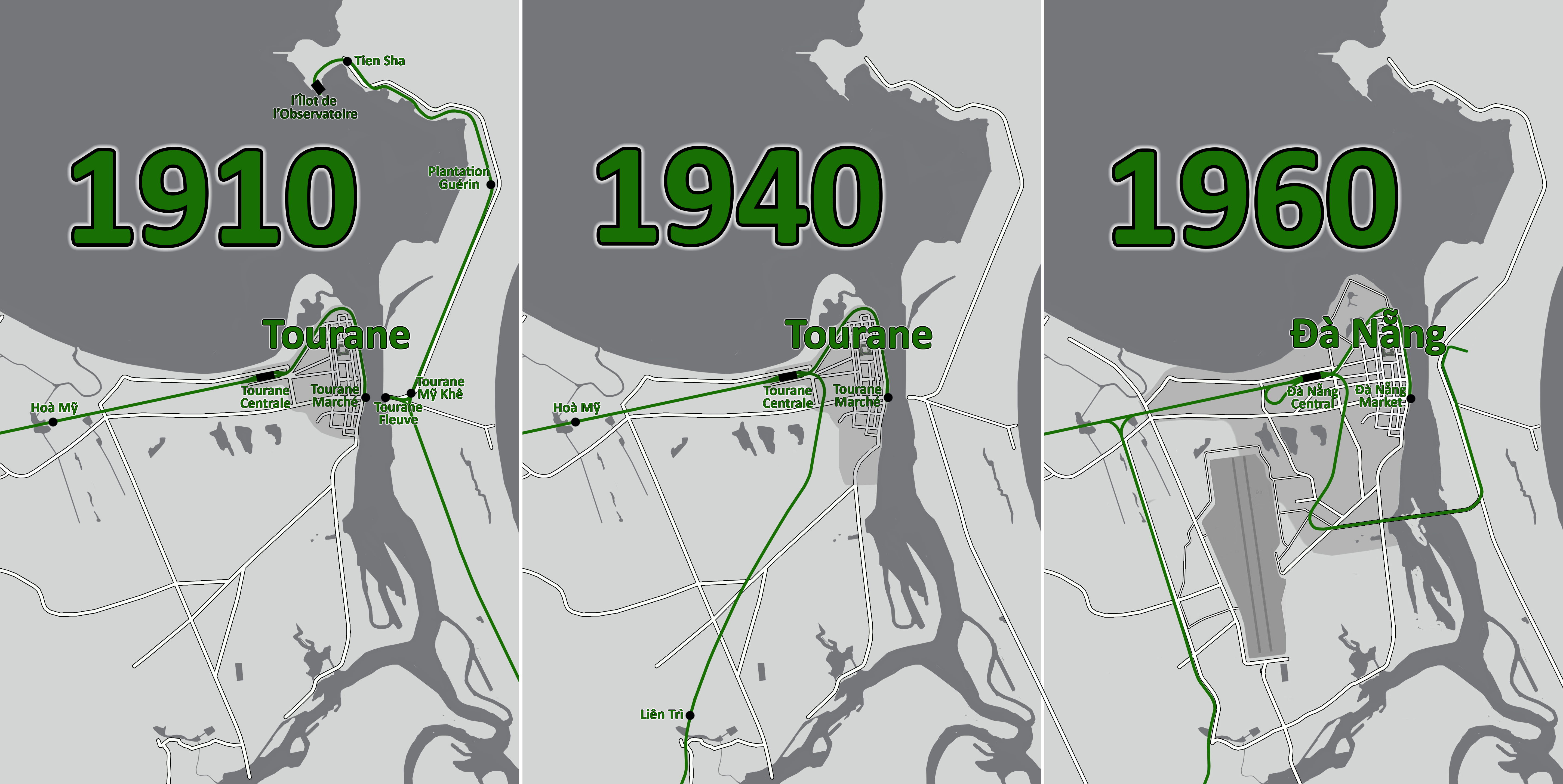
Rail and tram lines in Tourane-Đà Nẵng, 1910, 1940 and 1960
Tim Doling is the author of The Railways and Tramways of Việt Nam (White Lotus Press, Bangkok, 2012) and gives talks on Việt Nam railway history to visiting groups.
Tim is also the author of Exploring Quảng Nam (Nhà Xuất Bản Thế Giới, Hà Nội, 2020)
A full index of all Tim’s blog articles since November 2013 is now available here.
Join the Facebook group Rail Thing – Railways and Tramways of Việt Nam for more information about Việt Nam’s railway history and all the latest news from Vietnam Railways.
You may also be interested in these articles on the railways and tramways of Việt Nam, Cambodia and Laos:
A Relic of the Steam Railway Age in Da Nang
Date with the Wrecking Ball – Vietnam Railways Building
Derailing Saigon’s 1966 Monorail Dream
Dong Nai Forestry Tramway
Full Steam Ahead on Cambodia’s Toll Royal Railway
Goodbye to Steam at Thai Nguyen Steel Works
Ha Noi Tramway Network
How Vietnam’s Railways Looked in 1927
Indochina Railways in 1928
“It Seems that One Network is being Stripped to Re-equip Another” – The Controversial CFI Locomotive Exchange of 1935-1936
Phu Ninh Giang-Cam Giang Tramway
Saigon Tramway Network
Saigon’s Rubber Line
The Changing Faces of Sai Gon Railway Station, 1885-1983
The Langbian Cog Railway
The Long Bien Bridge – “A Misshapen but Essential Component of Ha Noi’s Heritage”
The Lost Railway Works of Truong Thi
The Mysterious Khon Island Portage Railway
The Railway which Became an Aerial Tramway
The Saigon-My Tho Railway Line

